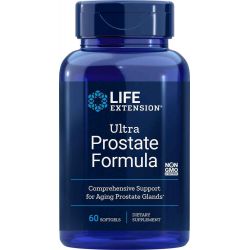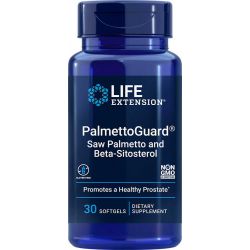Benign Prostatic Hyperplasia (BPH) part 1
%20part%201.jpg) The majority of men older than 60 years will be affected by benign (noncancerous) enlargement of the prostate gland. An enlarged prostate can be caused by either one of two conditions—benign prostatic hyperplasia or benign prostatic hypertrophy (both abbreviated BPH). Although the two conditions are slightly different (Roehrborn CG et al 2002), the prostate gland is enlarged in both conditions.
The majority of men older than 60 years will be affected by benign (noncancerous) enlargement of the prostate gland. An enlarged prostate can be caused by either one of two conditions—benign prostatic hyperplasia or benign prostatic hypertrophy (both abbreviated BPH). Although the two conditions are slightly different (Roehrborn CG et al 2002), the prostate gland is enlarged in both conditions.
BPH may be recurrent and progressive and (even though it is not prostate cancer) pose a danger to health. When the prostate gland enlarges, for whatever reason, the gland presses on the urethra (the tube that transports urine and semen [which contains sperm] to the outside of the body). Even the smallest increase in the size of the prostate gland tends to compress the urethra. The prostate gland produces a substantial portion of the liquid component of sperm. Also, smooth muscle cells in the prostate gland contribute to the forcible ejaculation of semen.
To treat BPH, conventional medicine usually focuses on drugs that inhibit the hormones that control prostate growth or that relaxes the smooth muscles inside the prostate gland. Surgery is also a treatment option. Most men, however, can benefit from a variety of complementary nutritional strategies that offer proven relief for BPH.
Under the Influence of Hormones
 Prostate gland growth is regulated by sex hormones, including estrogen, testosterone, and dihydrotestosterone (DHT). In the body, testosterone is metabolized into DHT by the enzyme 5-alpha-reductase. Often, as men grow older, more DHT is produced. Drugs and nutrients that lower DHT by inhibiting 5-alpha-reductase have been shown to reduce the size of the prostate gland and therefore reduce the symptoms of BPH.
Prostate gland growth is regulated by sex hormones, including estrogen, testosterone, and dihydrotestosterone (DHT). In the body, testosterone is metabolized into DHT by the enzyme 5-alpha-reductase. Often, as men grow older, more DHT is produced. Drugs and nutrients that lower DHT by inhibiting 5-alpha-reductase have been shown to reduce the size of the prostate gland and therefore reduce the symptoms of BPH.
Although testosterone and its metabolite DHT are the hormones most commonly associated with prostate disease, prostate growth is also influenced by estrogen. While estrogen is normally thought of as “the female hormone,” men produce estrogen throughout their lives by converting testosterone to estrogen using the enzyme aromatase. As men age, aromatase levels increase, resulting in higher estrogen levels. This helps explain why, as men age, testosterone levels decline (as higher aromatase levels convert testosterone to estrogen), but prostate glands continue to enlarge.
Among aging men, there is a growing imbalance between estrogen and testosterone. Testosterone levels, especially free testosterone, dramatically decline as men age, yet estrogen levels remain fairly stable or increase (Farnsworth WE 1996). Compared to younger males, older males have much more estradiol (the most potent form of estrogen) than free testosterone. These rising estrogen and declining androgen levels are even more sharply defined in the prostate gland. With aging, estrogen levels increase significantly in the prostate. Estrogen levels in prostate gland tissues rise even higher in men who have BPH (Shibata Y et al 2000; Gann PH et al 1995; Krieg M et al 1993).
By limiting aromatase, or inhibiting the binding of estrogen to prostate cells, it may be possible to reduce BPH or slow its progression. More research is needed.
Symptoms and Diagnosis of BPH
Symptoms differ among patients with BPH, but certain symptoms occur in the majority of cases. The number and intensity of symptoms also vary with age. Men who have milder symptoms and whose BPH has minimal impact on their quality of life may not require treatment. The most commonly reported symptoms of BPH include: (Lepor HL et al 2002; Scher HI 2001):
- Decrease in strength of the urinary stream and a decrease in the stream’s diameter
- Increased frequency in urinating during the day
- Need to urinate several times during the night (nocturia)
- Sensation of needing to urinate immediately (urgency)
- Straining to force urine out
- Dribbling urine or having difficulty stopping urination
- Having the feeling of still needing to urinate even after the stream has stopped
- Pain or a burning sensation during urination
- Complete retention of urine (because, in advanced BPH, an enlarged prostate can completely obstruct the passage of urine)
Physicians can help patients who have BPH develop an International Prostate Symptom Score (IPSS) to help guide treatment. The IPSS is based on the presence and severity of symptoms and is used worldwide.
The IPSS, along with quality-of-life scores and measurements from common diagnostic tests, can be used to help divide patients with BPH into stages. Knowing a patient’s BPH stage serves as a guide for BPH management. These stages include:
- Stage 1. Patients have no bothersome symptoms and no significant urine obstruction. In general, these patients do not need treatment at this time. They are observed closely by their physician (this is called “watchful waiting”).
- Stage 2. Patients have bothersome symptoms, but without significant urine obstruction. These patients can be treated with medication.
- Stage 3. Patients have significant urine obstruction (which is defined as urine flow of less than 10 milliliters per second (mL/s) and persistent residual urine of more than 100 mL. The patient’s physician may recommend a surgical procedure called transurethral resection of the prostate (TURP).
- Stage 4. Patients may have complications of BPH such as chronic retention of stones in the bladder. These patients would definitely need TURP.
Tests Used to Diagnose BPH
 Digital rectal examination. A digital rectal examination (DRE) is a routine test that identifies an enlarged prostate. To perform a DRE, a physician inserts a lubricated, gloved finger into the rectum. An experienced urologist can easily detect the posterior and lateral lobes of the prostate through the thin rectal wall. A normal prostate gland is about the size of a chestnut. A prostate gland with BPH will feel soft. A benign enlarged prostate will feel smooth and elastic. The tissues of a cancerous prostate gland are usually denser. BPH occurs only within the prostate capsule. A physician may suspect cancer if there are hard nodules or firm areas in the prostate (Lepor HL et al 2002; Scher HI 2001).
Digital rectal examination. A digital rectal examination (DRE) is a routine test that identifies an enlarged prostate. To perform a DRE, a physician inserts a lubricated, gloved finger into the rectum. An experienced urologist can easily detect the posterior and lateral lobes of the prostate through the thin rectal wall. A normal prostate gland is about the size of a chestnut. A prostate gland with BPH will feel soft. A benign enlarged prostate will feel smooth and elastic. The tissues of a cancerous prostate gland are usually denser. BPH occurs only within the prostate capsule. A physician may suspect cancer if there are hard nodules or firm areas in the prostate (Lepor HL et al 2002; Scher HI 2001).
Diagnostic tests. Prostate specific antigen (PSA) is a protein produced by prostate cells. Normally, it is found in high concentrations in seminal fluid and in small quantities in the blood. PSA is a prostate specific substance (Scher HI 2001). The normal PSA value range is between 0 and 4 nanograms per milliliter (ng/mL). Recent research suggests that up to 30 percent of men who have a PSA score of 2.6 to 4.0 ng/mL may have prostate cancer (Lobel B 2005). An elevated blood PSA level, while by no means diagnostic of cancer, is concerning because it indicates excessive breakdown and turnover of prostate cells. For this reason, men with elevated PSA levels should have additional diagnostic testing, most often including a prostate biopsy, to rule out prostate cancer (Scher HI 2001). For more information on prostate cancer and PSA, see the chapter on Prostate Cancer.
Uroflowmetry measures the time in which a given volume of urine is voided. Usually, a healthy man between the ages of 40 and 60 years voids 200 mL in about 11 seconds (a rate of 18 mL/s). A healthy man older than age 60 voids a little longer, more than 15 seconds (at a rate of 13 mL/s). A man with BPH may need 20 to 40 seconds to void 200 mL, depending on the severity of urethral constriction (Lepor HL et al 2002). Uroflowmetry can be done at home by using a measuring cup and a wristwatch that has a second hand. To perform uroflowmetry at home, drink lots of water. Then wait as long as you can to urinate. Measure the time it takes you to void 200 mL (about 7 ounces).
The volume of urine remaining in the bladder immediately after urination is completed is measured by a postvoid residual urine test. This test can be performed using ultrasound (a noninvasive technique) or a catheter (which is invasive). Increasing amounts of residual urine over time can indicate that the BPH has progressed and that there may be a need for surgery (Lepor HL et al 2002).
Therapeutic Options
 Generally, if a physician has diagnosed an enlarged prostate but the patient has no symptoms, the patient does not require treatment. However, severity of symptoms is associated with a greater likelihood of the need for surgery. Because most men with BPH do not develop a significant urine obstruction, and because minor symptoms develop slowly or not at all, urine flow studies are the preferred diagnostic tool to identify patients who do not require treatment. These patients can be followed by watchful waiting (Lepor HL et al 2002). This strategy, particularly when considering the slow progression of BPH, provides the opportunity to use complementary approaches (such as nutritional therapy) with no risk of undertreating patients.
Generally, if a physician has diagnosed an enlarged prostate but the patient has no symptoms, the patient does not require treatment. However, severity of symptoms is associated with a greater likelihood of the need for surgery. Because most men with BPH do not develop a significant urine obstruction, and because minor symptoms develop slowly or not at all, urine flow studies are the preferred diagnostic tool to identify patients who do not require treatment. These patients can be followed by watchful waiting (Lepor HL et al 2002). This strategy, particularly when considering the slow progression of BPH, provides the opportunity to use complementary approaches (such as nutritional therapy) with no risk of undertreating patients.
Watchful waiting. If BPH is not severe, the patient’s condition will be monitored closely by his physician. A physician should confirm that a delay in treatment will not lead to irreversible complications. Several measures, such as decreased intake of fluids (especially before bedtime) and moderate intake of alcohol and caffeine (Lepor HL et al 2002) can lessen severity of symptoms. Watchful waiting does not imply doing nothing. Quite the contrary, it provides an excellent opportunity to treat BPH with diet and nutritional supplements.
Transurethral microwave thermotherapy. Transurethral microwave thermotherapy (TUMT) is an alternative to surgery. This procedure uses a catheter tipped with a special antenna that delivers microwave energy to the prostate to selectively heat and kill prostate tissue. The microwave surgical instrument is designed so temperature and the depth of heating are precisely controlled. TUMT is an outpatient procedure performed while the patient is under sedation (not anesthetized). TUMT is an alternative for men with BPH who are not good candidates for surgery. Patients treated with TUMT have minimal, transient adverse effects that resolve spontaneously or resolve with medication. Symptom relief may occur within 3 weeks. One disadvantage of TUMT is the risk of retrograde ejaculation, a condition that occurs when semen enters the bladder rather than being ejaculated. While this does not affect the sensation of orgasm, it can cause infertility.
Transurethral needle ablation. Transurethral needle ablation (TUNA) uses low-level radiofrequency, at about 490 kilohertz (kHz), to cause the tissue that is to be ablated to reach a temperature of 50°C to 90°C. The procedure is carried out over the course of a few weeks. During TUNA, a catheter that is tipped with two flexible needles is inserted into the prostate through the penis. The needles are shielded at the base to avoid damaging the urethra. Radiofrequency energy passes from one needle to the other, destroying the prostate tissue between the needles. The progress of the procedure is viewed by transrectal ultrasound. TUNA can be performed as an outpatient procedure with the use of a local anesthetic and sedation (Lepor HL et al 2002).  Surgery. Surgery is widely used for treatment of BPH that is causing significant obstruction to urine flow. Surgery for BPH can be done through a transabdominal incision or through an endoscopic device inserted into the urethra (TURP). About 90 percent of all surgeries performed for BPH are TURP procedures. TURP is the standard against which other interventions are judged. During TURP, the physician uses an instrument called a resectoscope. The resectoscope is tipped with a small wire loop. The loop is used to snip off obstructing pieces of the prostate gland and then to cauterize the wound to minimize bleeding (although there may still be some bleeding). TURP has been shown to be an effective treatment; after TURP, symptoms are usually much improved. However, BPH may recur. Also, some men may eventually have erectile dysfunction (impotence). Additionally, most patients will experience some degree of incontinence, which will usually disappear in a short time. Most patients will remain in the hospital for about 3 days after undergoing TURP. Once the patient is released from the hospital, his recovery period is short and he usually experiences significant relief of his symptoms. The most common, unavoidable, and permanent adverse effect of TURP is retrograde ejaculation. TURP can also be performed using a laser. Studies have shown that photovaporization of prostate tissue using a focused laser (the Greenlight PV Laser System) results in reduced prostate size with a very low incidence of adverse effects (Kumar SM 2005). Alternatively, a procedure called transurethral vaporization of the prostate (TUVP), in which the tissue is vaporized, can be performed. In TUVP, vaporization electrodes deliver high heat directly to the prostate tissue by means of a grooved roller bar. The heat vaporizes the tissue much like a laser. This is a relatively new technique that is showing clinical promise and has been adopted by many experienced urologists. If it is necessary to remove a portion of the prostate gland, a partial prostatectomy may be performed. This procedure is open surgery performed while the patient is under general anesthesia. During the operation, the surgeon removes only the enlarged part of the prostate gland. This surgery should not be confused with a radical prostatectomy, in which the entire prostate gland is removed. Radical prostatectomies are performed in men with prostate cancer. The current clinical philosophy concerning BPH is to postpone any form of surgery for as long as possible to avoid complications that may jeopardize the patient’s quality of life. Stopping the progression of prostate enlargement through diet and pharmacotherapy should be the first approaches in the treatment of BPH (Djavan B et al 2002; Schulman C 2001).
Surgery. Surgery is widely used for treatment of BPH that is causing significant obstruction to urine flow. Surgery for BPH can be done through a transabdominal incision or through an endoscopic device inserted into the urethra (TURP). About 90 percent of all surgeries performed for BPH are TURP procedures. TURP is the standard against which other interventions are judged. During TURP, the physician uses an instrument called a resectoscope. The resectoscope is tipped with a small wire loop. The loop is used to snip off obstructing pieces of the prostate gland and then to cauterize the wound to minimize bleeding (although there may still be some bleeding). TURP has been shown to be an effective treatment; after TURP, symptoms are usually much improved. However, BPH may recur. Also, some men may eventually have erectile dysfunction (impotence). Additionally, most patients will experience some degree of incontinence, which will usually disappear in a short time. Most patients will remain in the hospital for about 3 days after undergoing TURP. Once the patient is released from the hospital, his recovery period is short and he usually experiences significant relief of his symptoms. The most common, unavoidable, and permanent adverse effect of TURP is retrograde ejaculation. TURP can also be performed using a laser. Studies have shown that photovaporization of prostate tissue using a focused laser (the Greenlight PV Laser System) results in reduced prostate size with a very low incidence of adverse effects (Kumar SM 2005). Alternatively, a procedure called transurethral vaporization of the prostate (TUVP), in which the tissue is vaporized, can be performed. In TUVP, vaporization electrodes deliver high heat directly to the prostate tissue by means of a grooved roller bar. The heat vaporizes the tissue much like a laser. This is a relatively new technique that is showing clinical promise and has been adopted by many experienced urologists. If it is necessary to remove a portion of the prostate gland, a partial prostatectomy may be performed. This procedure is open surgery performed while the patient is under general anesthesia. During the operation, the surgeon removes only the enlarged part of the prostate gland. This surgery should not be confused with a radical prostatectomy, in which the entire prostate gland is removed. Radical prostatectomies are performed in men with prostate cancer. The current clinical philosophy concerning BPH is to postpone any form of surgery for as long as possible to avoid complications that may jeopardize the patient’s quality of life. Stopping the progression of prostate enlargement through diet and pharmacotherapy should be the first approaches in the treatment of BPH (Djavan B et al 2002; Schulman C 2001).
Material used with permission of Life Extension. All rights reserved.
[1] Roehrborn CG et al 2002
[2] Farnsworth MY 1996
[3] Shibata Y et al 2000; Gann PH et al 1995; Krieg M et al 1993
[4] Lepor HL et al 2002; Scher HI 2001
[5] Foo KT 1995
[6] Lepor HL et al 2002; Scher HI 2001
[7] Scher HI 2001
[8] Lobel B 2005
[9] Scher HI 2001
[10] Lepor HL et al 2002
[11] Lepor HL et al 2002
[12] Lepor HL et al 2002
[13] Lepor HL et al 2002
[14] Lepor HL et al 2002
[15] Kumar SM 2005
[16] Djavan B et al 2002; Schulman C 2001



